Best things to do in Lisbon when it rains
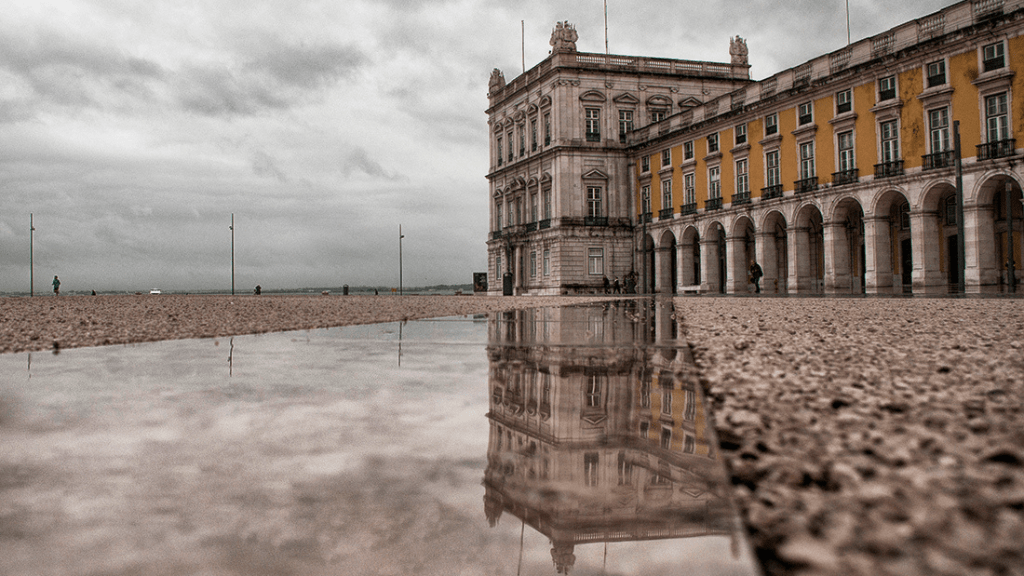
Hot weather. Glorious sunlight. Warm pastel colors and terracotta rooftops. These are all things often associated with Lisbon. But it wouldn’t be wise to assume that all of these elements are going to be at their greatest expression when you visit Lisbon.
We often say that there is no such thing as an ideal time to visit Lisbon. In fact, the capital of Portugal has plenty of wonderful things to offer all year round. But, if during the Spring and Summer you are almost guaranteed to be able to enjoy a beautiful day out at the beach, the same won’t necessarily be true during Winter.
Rain or shine, Lisbon has plenty of things to see, do and, of course, taste! So if it happens that you visit when the weather is wet and the cobblestone streets tend to be slippery, fear not, as there are enough places for you to visit and activities to partake in which will allow you to immerse yourself into the spirit of Lisbon and Portuguese culture as a whole!
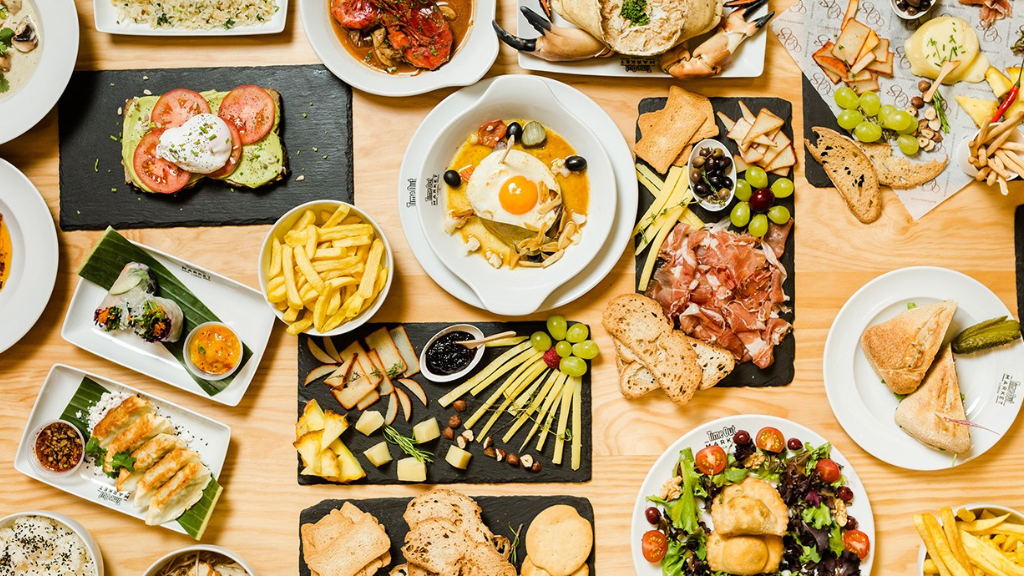
These are some of the best things you can do in Lisbon on a rainy day:
Eat… and drink
Too obvious? Well, you know us! For starters, Taste of Lisboa’s food and cultural walks take place rain or shine. While there is indeed some walking involved during our experiences, if the weather is not particularly inviting to be outdoors, we simply spend more time getting cozy at our carefully selected food and drink partners. Besides our very own food tours, the vast majority of Lisbon’s restaurants and bars have indoor seating, so there’s absolutely no reason for you not to explore Portugal’s wine regions and the greatness of our cuisine, independently of the weather. If besides being rainy it is also cold, opt for some of the most comforting Portuguese winter recipes.
Lisbon’s indoor food markets are great options to lounge around sampling different Portuguese foods, sweets and drinks. The most popular market downtown is Time Out Market Lisboa (Av. 24 de Julho 49, Cais do Sodré), but besides this tourist favorite, Mercado de Campo de Ourique (Rua Coelho da Rocha 104) is also a great choice, and you will be among locals.
If your idea of a cozy meal involves going to someone’s home, you may want to make the most of a rainy day in Lisbon and book yourself for dinner at a local’s home. This is not only a great opportunity to taste Portuguese home cooking but, most of all, to make friends with local folks who are generally very eager to meet international travelers and showcase the best of our cuisine and gracious hospitality.
If you want to explore the very best of Portuguese food and beverages, we have gathered incredible tips to help you make the most of your time in Lisbon:
🐙 Best seafood restaurants in Lisbon
🍗 Best peri-peri chicken restaurants in Lisbon
🍳 Best egg based dishes you must try in Lisbon
🍴 Best restaurants to eat contemporary Portuguese food in Lisbon
🍮 Where to eat the best Portuguese custard tarts in Lisbon
🌱 The best Portuguese vegan food and wine in Lisbon
🍺 Where to drink Portuguese craft beer in Lisbon
🍷 The 10 best wine bars in Lisbon
Learn about the history of salted cod
There is only one museum in the world entirely dedicated to the history of cod and, because if there is one cod obsessed nation in the world that is Portugal, Lisbon is home to it! Portugal’s intimate relationship with the Atlantic ocean materializes in the way we eat fish and, with particular emphasis, salt cure, cook and enjoy bacalhau.
The Codfish History Interpretation Centre guides visitors on the history of Gadus morhua fishing by the Portuguese and other Atlantic nations. Besides educational exhibits showcasing the importance of this fish for the culinary heritage and economy of countries such as Portugal, Lisbon’s cod museum also houses a shop and restaurant. Because there’s no better way to learn history than by tasting it!
You could also go try some of Portugal’s most renowned salt cod recipes independently, including bacalhau à Brás or bacalhau à Gomes de Sá, but if you want to understand who were the people behind these recipes and why they are named like that, there’s no better resource than Lisbon’s codfish interpretation center. Quite probably, one of the most original museums you’ll ever visit, and such a valuable asset to provide context for the several codfish meals you’re likely to end up having while in Portugal.
The Codfish History Interpretation Centre
📍Terreiro do Paço, Torreão Nascente, 1100-148 Lisbon
https://historiabacalhau.pt/en
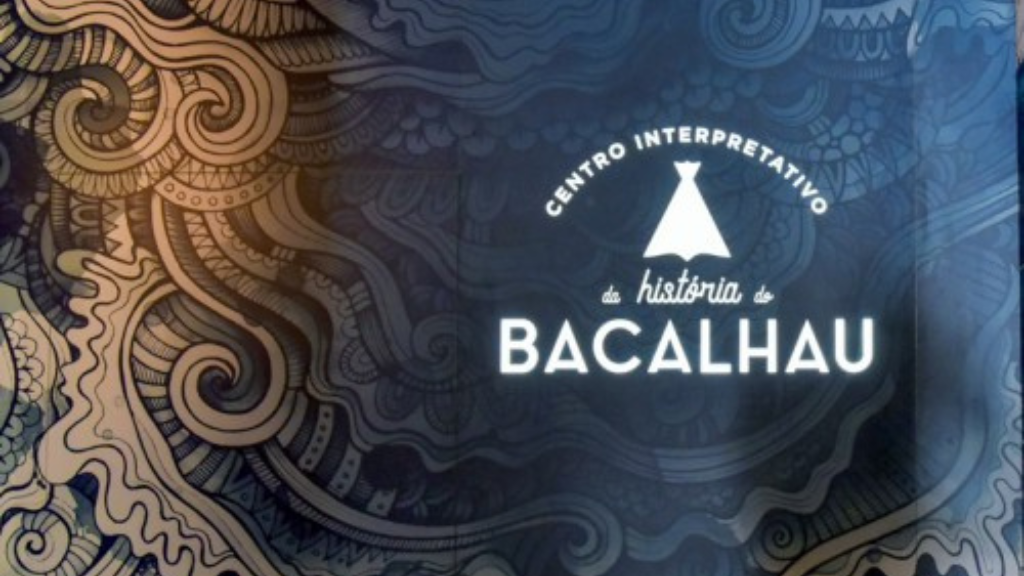
Explore the world of Portuguese tiles… and make your own!
Azulejos have been used to cover the facades of Portuguese buildings for almost a millenia. These ceramic tiles are an inheritance of the times of the Arab occupation in the Iberan Peninsula, which left many marks and influences behind (including food).
Roaming around Lisbon you’ll be able to appreciate the variety of intricate and colorful patterns which now-a-days decorate the buildings, but which did once upon a time serve more than an aesthetic purpose. Back when tiles started being used, they acted as a barrier to help prevent fires from spreading in case of an accident, while they were also ideal to regulate the temperature inside homes. Now-a-days we can enjoy more modern technologies for these practical purposes, but tiles are such a part of the Portuguese architectural beauty patterns that they are still often included in modern buildings, as well as in renovated constructions.
To better understand the use of azulejos in Portuguese architecture, as well as to gaze at some astonishing tiled panels, we recommend spending some time at the National Tile Museum (Rua Me. Deus 4), which is housed inside the former Madre de Deus Convent. This museum was started back in 1509 by Queen D. Leonor and its several collections will take you on a journey through the history of tiles.
If your interest in tiles meets your most creative side, you may want to partake in a ceramics making or tile painting workshop while in Lisbon. Art schools and tile workshops such as A Casa do Azulejo (Rua Ernesto da Silva 52 B) and Cerâmica S. Vicente (Rua de S.Vicente) offer different classes for artistic expression using tiles as a medium, and we think that this is such a pleasant and inspiring way to spend some hours in Lisbon on a rainy day.
National Tile Museum
📍Rua Me. Deus 4, 1900-312 Lisbon
www.museudoazulejo.pt
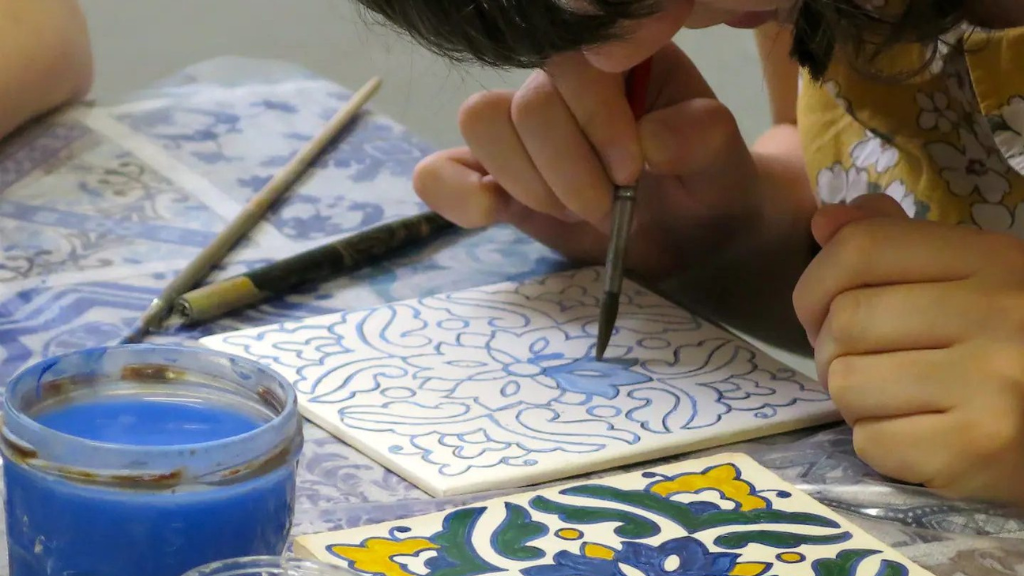
Do a “tour” aboard tram 28
Fancy seeing some of Lisbon’s most popular sights but don’t care about being under the rain? The popular tram 28 (known locally as elétrico 28) may offer a very picturesque solution! Even though this is a regular commuter tram which is a part of Lisbon’s public transportation network, tram 28 has become incredibly popular. Visitors who hop aboard take a journey which goes from Martim Moniz to the happening neighborhood of Campo de Ourique, passing by the charming districts of Alfama, Baixa, Estrela and Graça.
This is what the experience aboard tram 28 looks like:
The lines of eager tourists waiting for the tram in Martim Moniz square can get quite crazy. Even though on a rainy day the wait may be shorter, we’d recommend making your way to Campo de Ourique in some other way and, instead of doing the tram tour there, do it on its way back downtown. The views are the exact same, just in the reverse order, and they include delightful city scenes and many historical sites such as Lisbon’s Sé Cathedral, the Estrela Basilica and São Vicente’s Monastery. The glamor of tram 28’s scenic route is enhanced by the tram in itself, which is the original 1930s wagon, with a polished wooden interior and a bright yellow painted exterior. Make sure to buy your Zapping tickets in advance to pay half the price you’d pay when you purchase your tram ticket directly from the driver, and try to grab a seat by the window for an even more impressive experience!
Cook traditional Portuguese food
How about feeling like a Portuguese chef for a day? If you’ve already come to the conclusion that you like Portuguese food, and we surely hope that is the case, you may want to add a couple of recipes to your cooking repertoire in order to satisfy your cravings when you’re back home. Wear an apron and let some knowledgeable and friendly local chefs teach you how to make traditional Portuguese dishes or fun petiscos which you can serve when you invite friends to your home. If baking is your cup of tea, you must not leave Lisbon without perfecting the recipe for pastel de nata, Portugal’s most acclaimed pastry! Custard tarts aren’t as hard to make from scratch as they may seem at first and, trust us, all the effort will be worth it when you take a bite of these beautiful creamy creations wrapped with flaky puff pastry.
Some of the greatest cooking classes in Lisbon start with a market tour, which will grant you the opportunity to get up close to the freshest local ingredients and learn more about where our food comes from. After you’ve seen who are the people behind the food you are about to have, and you do the honors behind the stove yourself, we’re pretty confident food will taste like never before. In fact, some of the best Portuguese food you may end up having in Lisbon is the one you’ll cook yourself!
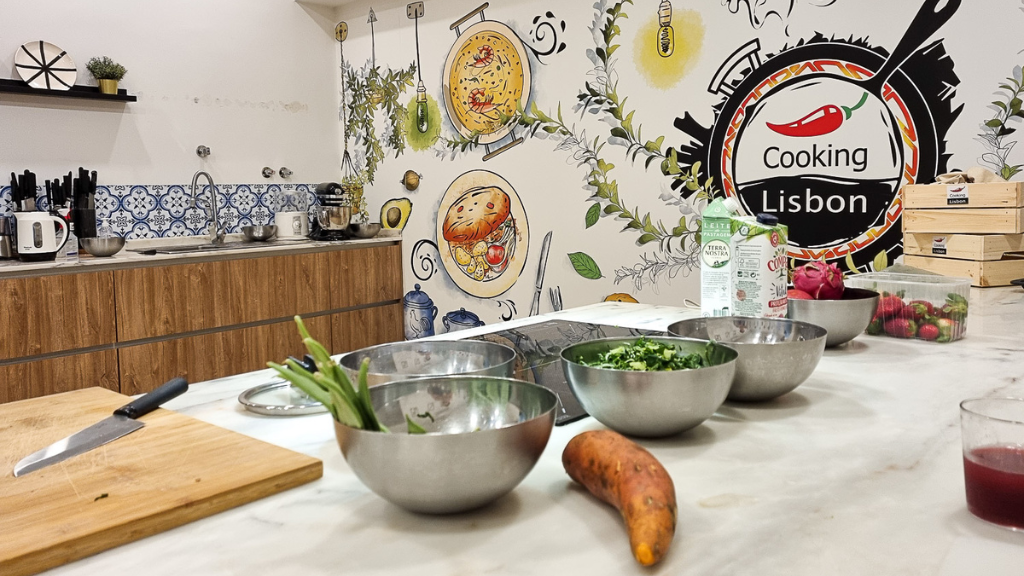
Shop for typical Portuguese products
We don’t mean to appeal to your consumerist side but there’s no arguing that a rainy day is perfect to hit the shops and browse for souvenirs from your Portugal trip. Instead of buying things you could potentially find anywhere else in the world, our recommendation would always be to focus on typical Portuguese products, including unique food souvenirs which are representative of Lisbon. From pastel de nata liqueur to gourmet canned seafood, there are truly great gifts you can purchase for yourself or for your loved ones back home, without having to splurge a lot.
Of course Portuguese souvenirs aren’t limited to edible goods. Other interesting finds in Lisbon would include tiles, ceramics, textiles, publications such as cook books, amongst many others. A Vida Portuguesa (inside Time Out Market, or at Largo do Intendente Pina Manique 23), for example, has an incredible collection of unique made-in Portugal artisanal goods, comprising of confections, hand-made baskets, beauty products, decorative items, and so much more.
Other stores we’d recommend to shop typical Portuguese products in Lisbon include Loja das Conservas (Rua do Arsenal 130) and A Conserveira de Lisboa (Rua dos Bacalhoeiros 34) for all things canned fish; Garrafeira Nacional (Rua de Santa Justa 18) for the best selection of Portuguese wines; Cerâmicas na Linha (Rua Capelo 16) or Vista Alegre (Largo do Chiado 20 23) for Portuguese tableware; and even traditional grocery stores where you could for example buy salted cod, regional cheeses and charcuterie from all across the country, all properly packed and ready for your trip abroad.
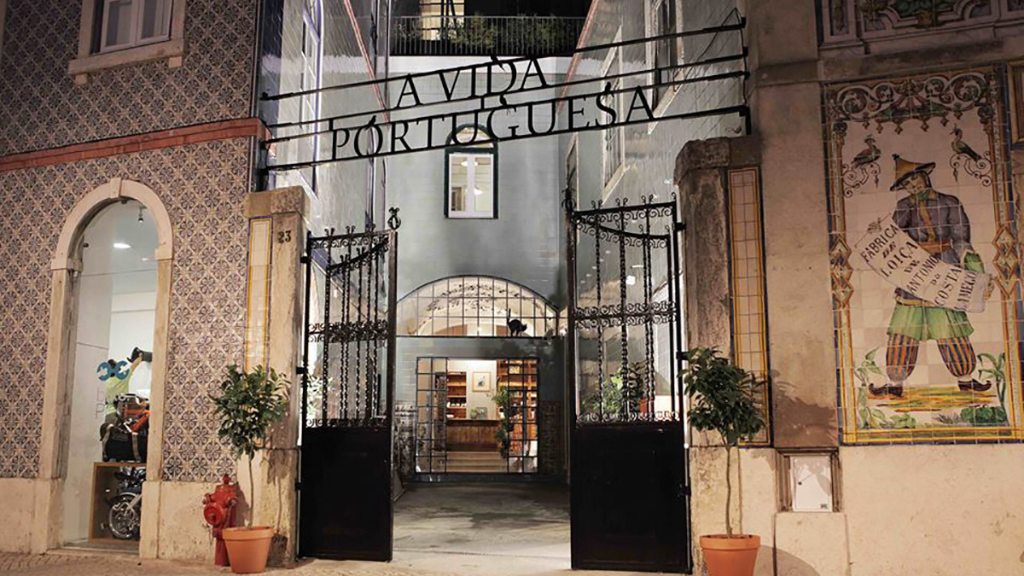
Enjoy the warm indoors at some of Lisbon’s best museums
This may sound like an obvious tip for a rainy day but the truth is that there are several worthwhile museums you ought to visit in Lisbon, so you might as well make the most of the wet weather and go for it!
If you’re visiting Lisbon with kids, but not necessarily only in that case, one of the most popular options would be Oceanário de Lisboa (Esplanada Dom Carlos I s/nº), which is one of Europe’s largest aquariums. Here you’ll be able to marvel at more than 8000 marine creatures, while also learning about ocean conservation. Lisbon Oceanarium’s exhibition features terrestrial and marine ecosystems, as well as the temperate, tropical and cold waters of the Earth’s oceans.
If you’re into art, we’d recommend heading to Museu Nacional de Arte Antiga (Rua das Janelas Verdes – pictured here), which houses Portugal’s most prominent public collection, from the 12th to the 19th century. If you prefer to appreciate contemporary art, Museu Coleção Berardo (Praça do Império) is the main modern and contemporary art museum in the city, with pieces by international world acclaimed names such as Warhol or Picasso, but also Portuguese artists like Amadeo Souza-Cardoso or Maria Helena Vieira da Silva.
Museu do Fado (Largo do Chafariz de Dentro 1, Alfama), dedicated to Lisbon’s most popular music genre, is the kind of museum you go to not only to visit the permanent exhibits but, on given days, also to attend a concert. Lisbon’s mournful nostalgic music may be sung in Portuguese, but you don’t need to understand the language to feel the emotions fado is bound to arise within you.
Other museums which may help you get a little closer to portuguese culture while you are in Lisbon include Museu de Lisboa (Campo Grande 245), which showcases the evolution of Lisbon from prehistoric times until the 20th century; Casa Fernando Pessoa (Rua Coelho da Rocha 16 18), if you’d like to immerse yourself in the world of one of Portugal’s most famous poets; or Museu do Palácio Nacional da Ajuda (Largo da Ajuda), to see where Portugal’s royal family decided to establish its home after the earthquake of 1755 destroyed downtown Lisbon and the former royal palace.
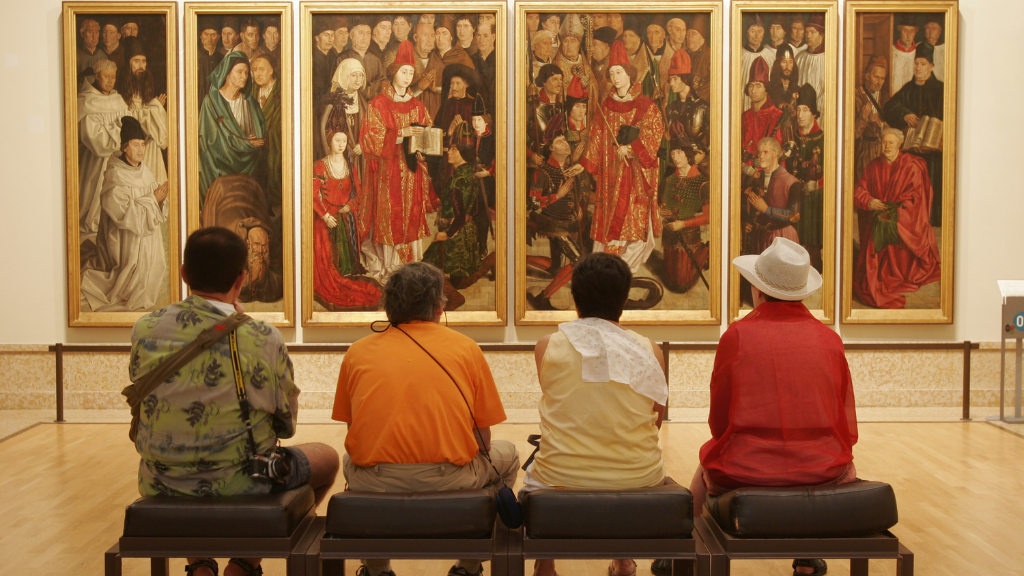
Go back in time by visiting Lisbon’s most iconic monuments
Belém, Lisbon’s so-called monument district, may indeed be a place best toured while walking around. But, if the weather isn’t all that inviting to be outdoors, nothing stops you from taking your time exploring some of the most striking constructions you’ll find around here, including the Jerónimos Monastery (Praça do Império). Spending a few hours inside this UNESCO World Heritage site will help you better understand Vasco Da Gama’s voyage to India and the Portuguese Age of Explorations, so don’t rush as you take in the history, the intricate Manueline architecture and photograph the many beautiful corners of this iconic Lisbon site.
Other quintessential Lisbon monuments which you can explore on a rainy day include Panteão Nacional (Campo de Santa Clara), which houses the tombs of Portugal’s major historic celebrities, including former presidents of the country, writers, football star Eusébio and fado singer Amália Rodrigues, aka “the voice of Portugal”. If you don’t care about any of these personalities per se, a visit to the national pantheon can still be very rewarding to marvel at a beautiful example of Portuguese Baroque architecture, with privileged views of the city’s historic center and the Tagus river.
Other Lisbon monuments worth entering and spending time at include Lisbon’s Cathedral known as Sé de Lisboa (Largo da Sé), which is the oldest and most important church in the city; and the São Jorge Castle (Rua de Santa Cruz do Castelo), which is visible from many parts of the city but only offers the full picture once you go inside.

Get cozy with a Portuguese book in English
For those days when you feel like taking it slow, there’s nothing like grabbing a cup of coffee or a hot chocolate and getting lost in the pages of a good book. While in Lisbon, of course we’d recommend browsing books about our country or, even better, going for Portuguese authors altogether.
Located inside the hipster quarter of LX Factory, Ler Devagar (Rua Rodrigues de Faria 103 – G 0.3 – pictured here) is an eye-catching bookstore which also houses a small coffee shop. As such, it is the perfect place to select a book and, right there and then, start reading it while sipping your beverage.
Downtown, you’ll find Livraria Bertrand (Rua Garrett 73 75), the oldest and still running bookstore not only in Lisbon, but in the entire world! As you walk into this book shop in the neighborhood of Baixa-Chiado, you’ll immediately notice a lot of Portugal related books on the shelves to your left hand side. We’re talking about books by leading Portuguese authors which have been translated to English, such as Fernando Pessoa, but also delicious Portuguese cookbooks which would make a great (and practical) souvenir to take back home with you. Just like Ler Devagar, Bertrand also has a small café inhouse, making it an ideal location for a warm and easy literary afternoon.
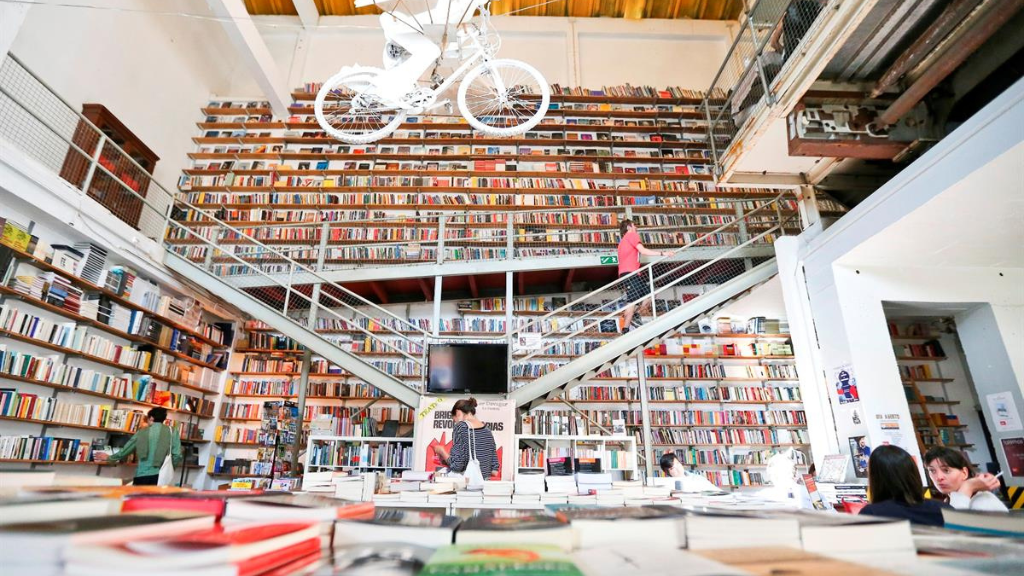
Enjoy a live fado show
Last but not least, when the sun goes down but the rain won’t cease, get cozy and nostalgic at a live fado show. Fado shows are often marketed to tourists as part of a set dinner. Such an experience can be very enjoyable but it usually comes at a price. So if you’re looking to enjoy fado in a more informal manner, don’t worry as there are also bars where you can simply grab a drink while enjoying the melancholic sounds of fado. In this kind of place you are much more likely to come across other Lisbon folks, who don’t shy away from letting their emotions flow as the performers strike the Portuguese twelve string guitar and singers put the concept of saudade into a melody.
Some of our recommended places to enjoy live fado in Lisbon include:
A Severa (🍴+🎶)
📍Rua das Gáveas 51, 1200-206 Lisbon
www.asevera.com/en/fado-restaurant
Fama d’Alfama (🍴+🎶)
📍Rua do Terreiro do Trigo 80, 1100-604 Lisbon
www.instagram.com/famadalfama
Adega Machado (🍴+🎶)
📍Rua do Norte 91, 1200-284 Lisbon
www.adegamachado.pt/en
Tasca do Chico (🍺+🎶)
📍Rua do Diário de Notícias 39, 1200-141 Lisbon
www.instagram.com/tascadochico
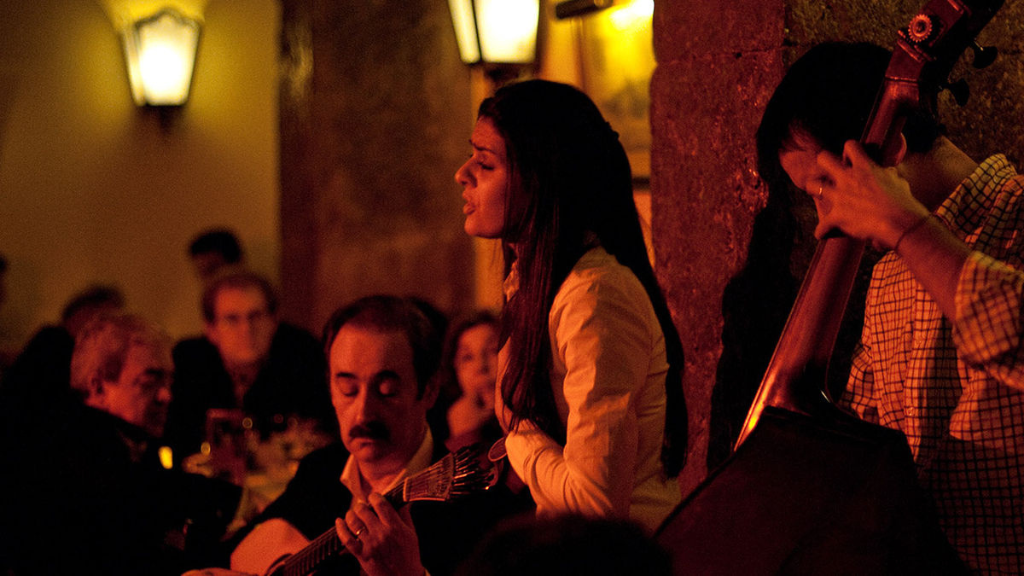
As you can see, Lisbon has a lot to offer rain or shine! If you’d like to share photos of your local findings or ask for further tips, we’d love to hear from you via Instagram – Please tag us: @tastelisboa #tasteoflisboa
Feed your curiosity on Portuguese food culture:
Best peri-peri chicken restaurants in Lisbon
How to tell if a restaurant in Lisbon is authentic
Itinerary for the perfect weekend in Lisbon
Real people, real food. Come with us to where the locals go.
Signup for our natively curated food & cultural experiences.
Follow us for more at Instagram, Twitter e Youtube
